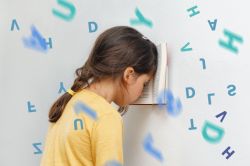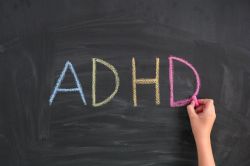The autistic brain doesn’t perceive less, it perceives more. Sounds are louder, lights are brighter, and touch feels deeper. What for most people forms the quiet background of reality can, for an autistic mind, become an overwhelming stream of sensations that cannot easily be filtered out. This heightened sensitivity is not a flaw in the system, but its unique configuration. Multisensory therapy helps create an environment where the brain can once again feel safe.
How the Autistic Brain Perceives the World
Autism is not a disorder of perception, it is a different way of processing sensory information. The brain receives more input than it can easily organize and reacts to it more strongly. Scientific studies show that in people on the autism spectrum, there is increased activity in areas responsible for sensory integration - particularly in the amygdala, hippocampus, and temporal lobes. This can lead to overstimulation, disrupted filtering of stimuli, and difficulty regulating attention and emotion.
Yet this sensitivity also brings a remarkable gift: an exceptional ability to perceive patterns, details, rhythms, and subtle shifts that others may overlook. The autistic brain is not less capable - it simply experiences reality in a higher resolution.
Sensory Overload and Nervous System Balance
For the autistic nervous system, the key to stability lies in predictability and sensory balance. Excessive brightness, noise, unfamiliar smells, or chaotic movement can trigger overload, pushing the brain into a fight-or-flight state. In that phase, access to speech, connection, and calm is lost - the body reacts before consciousness can intervene.
The goal of multisensory therapy is not to eliminate stimuli but to help the brain re-tune. By consciously working with rhythm, temperature, scent, light, and touch, the nervous system can gradually restore its natural ability to regulate and integrate sensory information.
Multisensory Therapy for the Autistic Brain
Multisensory therapy communicates with the brain without words - through the senses themselves. In a setting that feels stable, gentle, and safe, the nervous system can re-establish its internal coherence.
-
Light - Slow, warm spectrums (amber or red) calm the overactive visual system.
-
Photobiomodulation (e.g. Vielight Alpha 10 Hz) supports parasympathetic activation and neural regeneration.
-
Sound - Soft rhythmic frequencies and natural ambient soundscapes help synchronize the brain’s inner rhythm and reduce stress.
-
Scent - Subtle essences (lavender, chamomile, cedarwood, sandalwood) create a sense of safety and grounding, acting directly on the limbic system - the bridge between emotion and memory.
-
Touch and warmth - Gentle vibration, deep pressure, or weighted blankets help the body regain its boundaries and return to presence.
Rather than creating performance, multisensory therapy offers a space for calm - a place where the brain can simply be.
Safety as the Foundation of Connection
For an autistic individual, safety is the essential condition for any form of connection. When the nervous system relaxes, the brain stops reading the world as a threat and begins to perceive it as an environment for exploration. From this inner calm, communication and creativity can naturally emerge - not from effort, but from trust. Autism is not withdrawal from the world but another kind of openness - an attunement to the subtle signals and details that shape the texture of reality.
Part of the Light Brains series: Neurodivergence and Multisensory Therapy
→ Introduction: Neurodivergence and Multisensory Therapy
→ ADHD and Attention in Motion
→ Autism and Sensory Sensitivity
→ Dyslexia and the Visual Brain
→ High Sensitivity as a Form of Neurodivergence
→ The Creative Brain and Expanded Perception
Recommended Reading
-
Marco, E. J., Hinkley, L. B. N., Hill, S. S., & Nagarajan, S. S. (2011). Sensory processing in autism: A review of neurophysiologic findings. Pediatric Research, 69(5 Pt 2), 48R-54R. → A review of the neurophysiological mechanisms underlying sensory sensitivity in autism and their behavioral impact.
-
Robertson, C. E., & Baron-Cohen, S. (2017). Sensory perception in autism. Nature Reviews Neuroscience, 18(11), 671-684. → An overview of research describing how autistic brains process sensory input differently and more intricately.
-
Cascio, C. J., Moana-Filho, E. J., Guest, S., Nebel, M. B., Weisner, J., Baranek, G. T., & Essick, G. K. (2019). Perceptual and neural response to affective tactile texture stimulation in adults with autism spectrum disorder. Autism Research, 12(3), 453-465. → Examines how adults on the spectrum perceive and emotionally respond to tactile stimulation.
-
Bagdasarian, G., & Arns, M. (2021). Neurofeedback and photobiomodulation for autism spectrum disorder: Emerging neurotechnologies for sensory regulation. Frontiers in Human Neuroscience, 15, 728459. → A scientific summary of new neurotechnologies supporting sensory regulation through light and neurofeedback.
-
Grandin, T. (2011). The Way I See It: A Personal Look at Autism and Asperger’s. Future Horizons. → Temple Grandin’s personal insights into living with autism and understanding the sensory world from within.
This text is part of the Light Brains series on neurodivergence and multisensory balance.
🌐 www.lightbrains.online





